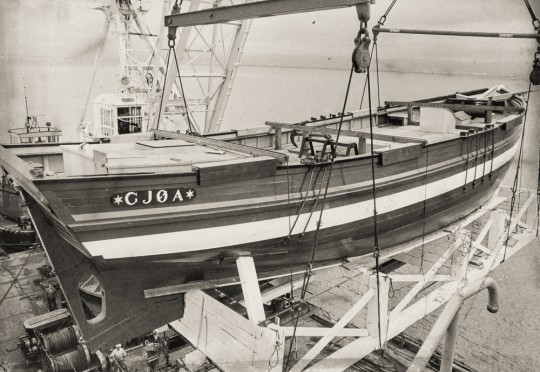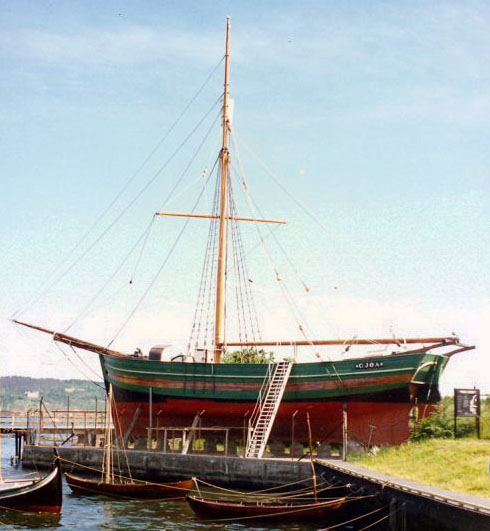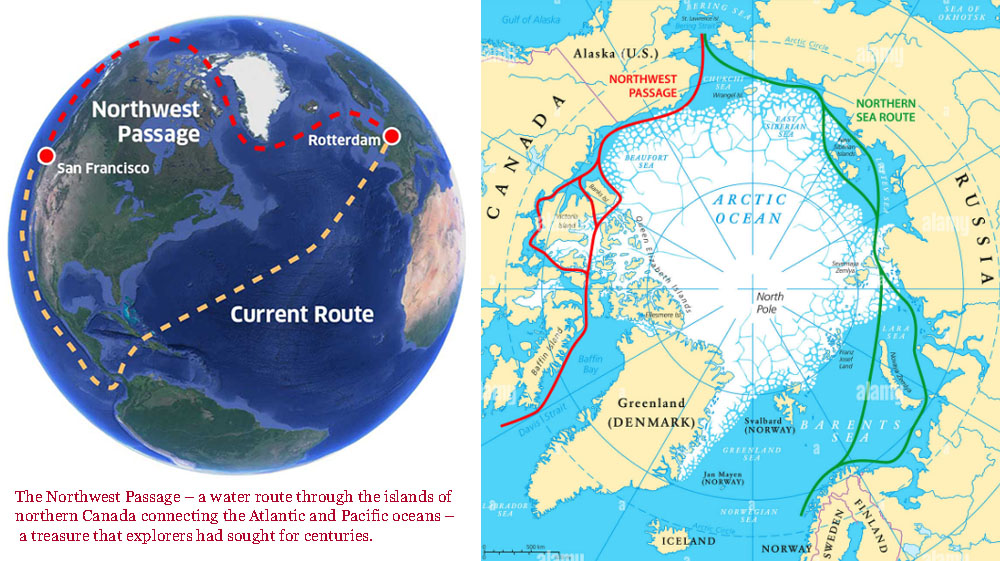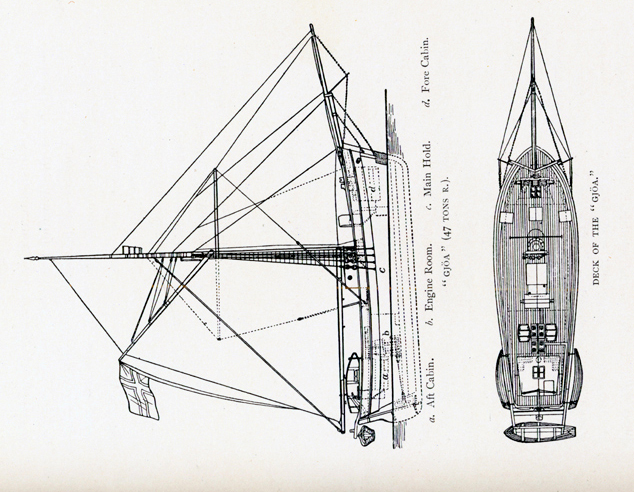|


256-bit encryption
$500,000 protection

|
Gjøa
boat model
Gjøa was the first
ship to be sailed through the entire Northwest Passage. Roald Amundsen and his six companions accomplished this
in 1903-06.

On 28 March 1901 Roald Amundsen signed the contract to
buy the Gjøa. The shipyard Tromsø Skipsverft put in
extra strengthening of the hull, lengthened the ice
sheathing down to the keel. In May 1902 the Gjøa was
given a 13 HP Dan hot-bulb motor. This was one of the
first petrol engines to be installed in a Norwegian
vessel.

The Gjøa left Kristiania on 16 June 1903, and became the
first ship to sail through the entire Passage. Amundsen
served as the expedition leader and Gjøa's master. His
crew were Godfred Hansen, a Danish naval lieutenant and
Gjøa's first officer; Helmer Hanssen, second officer, an
experienced ice pilot who later accompanied Amundsen on
subsequent expeditions; Anton Lund, an experienced
sealing captain; Peder Ristvedt, chief engineer; Gustav
Juel Wiik, second engineer, a gunner in the Royal
Norwegian Navy; and Adolf Henrik Lindstrøm, cook.The
expedition arrived in Nome, Alaska on 30 August
1906. Gjøa anchored in San Francisco on 10 September
1906 and was met with enormous enthusiasm from the
inhabitants there.
Today, the Gjøa belongs
to the Fram Museum.

Model is built per commission only. Contact
us for sizes and prices.
Click here for
more details.
Don't be
fooled by some Gjoa junks out there. They have numerous errors and
the most obvious is the colors on the hull. The hull itself is too shallow
and the draft (the red paint part) is way too low. The
rudder is too long. No boats and their davits on the
sides. Their decision to skip the black stripe on the
hull puzzled us. The mast system is a very wrong.
Unsightly yellow deck color. The magnificent historic
boat all the sudden becomes ugly in the hand of the
amateurs.
Learn more about the
Gjøa
boat here:
https://en.wikipedia.org/wiki/Gj%C3%B8a

|